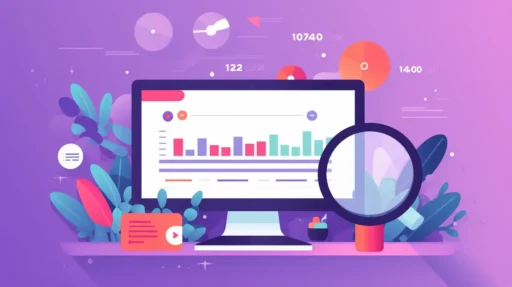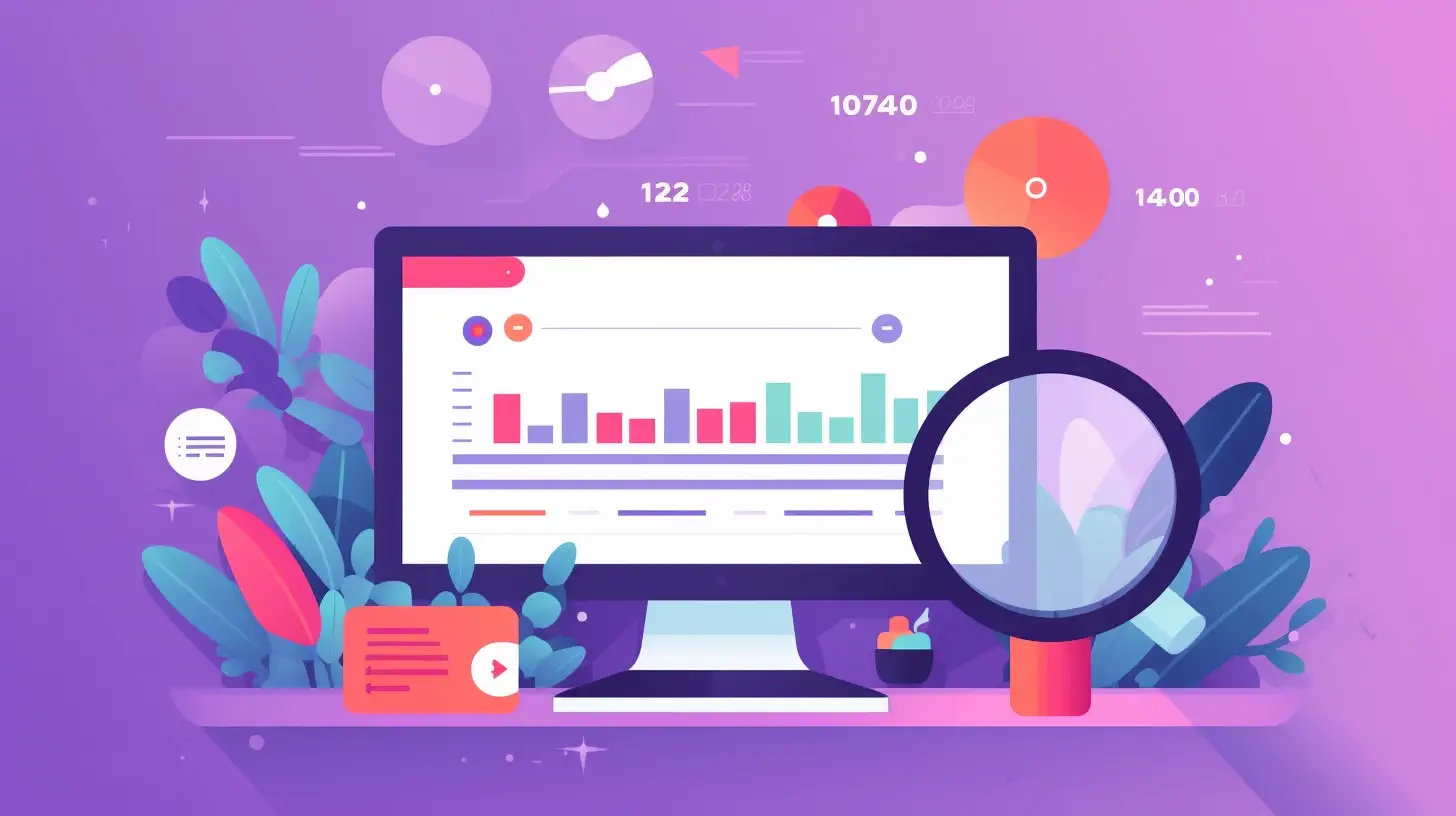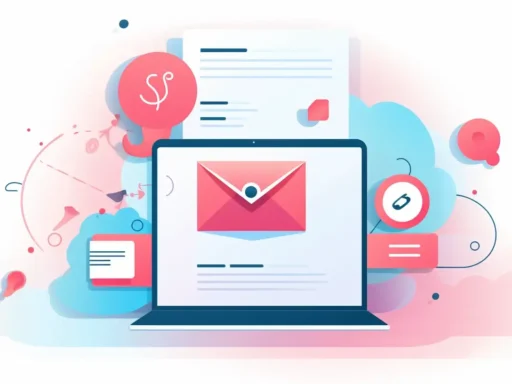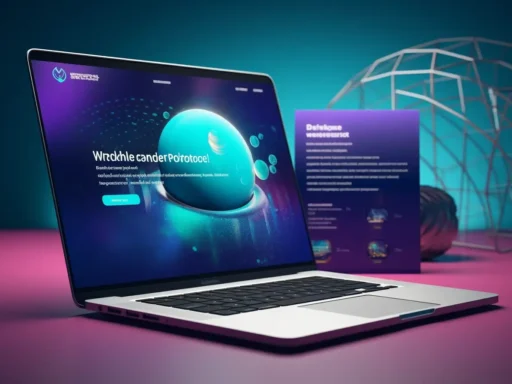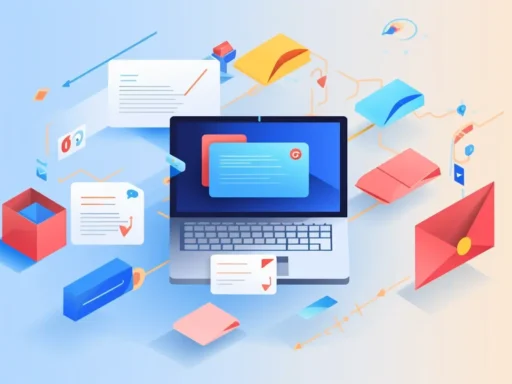The primary goal of a landing page is to convert visitors into leads or customers. To create a high-converting landing page, it is crucial to make a strong first impression within the first few seconds. This can be achieved by selling the benefits of your product or service, providing social proof, speaking the visitor’s language, and solving their problems straightaway. Additionally, offering discounts and free content can incentivize sign-ups. It is essential to focus on mobile optimization, keep web forms simple, and track important metrics to continuously improve your landing page’s performance.
Key Takeaways:
- Make a strong first impression within seconds.
- Sell the benefits of your product or service.
- Include social proof to build credibility.
- Speak the language of your target audience.
- Solve visitors’ problems immediately.
- Offer incentives like discounts and free content.
- Optimize for mobile devices.
Selling a Better Life
To captivate visitors and make them interested in your offering, it is important to focus on selling how your product or service can enhance their lives. By striking an emotional chord and clearly highlighting the unique value proposition, you can inspire prospects to envision how your offering can solve their problems and improve their lives.
One effective approach to selling a better life is to tap into the emotional needs and desires of your target audience. For example, if you offer a fitness program, instead of just highlighting the features of your program, focus on the transformative impact it can have on their health and self-confidence. Show before-and-after photos of individuals who have achieved remarkable results, and share their personal stories to create an emotional connection with your audience.
Another important element is to clearly communicate the unique value proposition of your product or service. What sets it apart from the competition? What specific benefits can your target audience expect to experience? By answering these questions and clearly articulating the unique aspects of what you offer, you can position your offering as the solution that will truly change their lives for the better.
Successful Examples
Let’s take a closer look at two landing pages that effectively sell a better life.
| Company | Landing Page Example |
|---|---|
| Alfred | Alfred offers a personal help and hospitality service that allows busy individuals to enjoy a better quality of life. Their landing page uses vibrant visuals and persuasive copy to sell the convenience and luxury of having a personal assistant. By showcasing the time and stress that can be saved, Alfred taps into the desire for more free time and a better work-life balance. |
| Betterment | Betterment is an investment startup that aims to help individuals achieve better financial futures. Their landing page highlights the peace of mind that comes with smart investing. They emphasize the simplicity of their platform and the potential for long-term growth, appealing to those who want to achieve financial freedom and enjoy a better quality of life. |
These examples demonstrate how effectively selling a better life can drive conversions and inspire individuals to take action. By understanding your audience’s needs, connecting on an emotional level, and clearly communicating the unique value proposition of your offering, you can create a compelling landing page that motivates visitors to engage with your brand and experience the better life you are selling.
Providing Proof
Testimonials are a powerful tool for converting visitors into customers. They serve as social proof, showcasing the positive experiences of others and demonstrating the value of your product or service. By incorporating testimonials, customer reviews, awards, and trust seals on your landing page, you can build trust and credibility with potential customers.
Testimonials provide genuine customer experiences that help visitors envision themselves having a similar positive experience, making them more likely to convert. Here is an example of how testimonials can be structured:
| Name | Testimonial |
|---|---|
| Emily Johnson | “I was skeptical at first, but after trying XYZ product, I can confidently say it has exceeded my expectations. It’s a game-changer!” |
| Mike Thompson | “I’ve tried many similar services, but none compare to XYZ. The customer support is outstanding, and the results speak for themselves.” |
| Amy Roberts | “I was hesitant to invest in XYZ service, but once I saw the positive reviews and testimonials, I knew I had to give it a try. I’m so glad I did!” |
As you can see, these testimonials provide real-world feedback from satisfied customers, reinforcing the trustworthiness and quality of your offering. Incorporating testimonials on your landing page can significantly enhance your conversion rate and drive more customers to take action.
Additionally, including social media testimonials, customer reviews from trusted review platforms, and any relevant awards or certifications helps further build trust and credibility with your audience. These proof elements demonstrate that your product or service has been positively received by others and offer assurance that they’re making the right choice.
By providing proof of your product or service’s quality and positive customer experiences, you can create a persuasive and trustworthy landing page that encourages visitors to convert.
Speaking the Visitor’s Language
When designing a landing page, it is crucial to understand your target market and tailor your language and visual design to match their mood and preferences. By utilizing language and imagery that resonate with your audience, you can create a landing page that speaks directly to their needs, values, and desires.
One great example of a landing page that effectively speaks the visitor’s language is NetJets. NetJets caters to individuals seeking luxury and exclusivity, and their landing page reflects this target market perfectly. From the elegant imagery of private jets to the sophisticated language that highlights the benefits of private travel, NetJets creates an aspirational experience that resonates with their audience.
Another excellent example is VistaJet, a private jet charter company targeting well-heeled families. Their landing page showcases spacious cabins, child-friendly amenities, and a warm, inviting tone that speaks directly to the desires and interests of families seeking a luxurious travel experience.
Solving People’s Problems Straightaway
When visitors land on your website, it’s important to understand their primary action and what problems they’re looking to solve. By addressing their needs immediately and providing a seamless path to the desired action, you can increase conversions and drive results. Here are some strategies to effectively solve people’s problems straightaway:
- Capture Attention with a Clear Value PropositionClearly communicate the unique value your product or service offers. Highlight how it can address specific pain points and solve problems for your target audience. Your value proposition should be concise, compelling, and prominently displayed.
- Streamline the Conversion ProcessMake it easy for visitors to take the desired action by minimizing any unnecessary steps or barriers. Simplify the user experience by designing intuitive web forms, reducing the number of fields to only the essentials, and providing clear instructions for completion.
- Showcase Relevant Content and FeaturesPresent content and features that directly address visitors’ needs and align with their primary action. Highlight key benefits, testimonials, or case studies that demonstrate how your offering solves problems and delivers results. Use compelling visuals to grab attention and engage visitors.
By focusing on solving problems, streamlining the primary action, and providing a clear path to the desired action, you can create a landing page that maximizes conversions and drives user commitment.
| Problem | Solution |
|---|---|
| Visitors need to find suitable accommodations for their upcoming trip. | Airbnb allows users to immediately start planning their trip by searching and booking unique accommodations worldwide. |
| People require assistance with tasks and errands around the home. | TaskRabbit connects users with pre-qualified, reliable Taskers who can help with a wide range of tasks and errands, solving their immediate problems. |
Making Them an Offer They Can’t Refuse
Offering incentives is a powerful way to entice visitors and increase conversions on your landing page. By providing something of value in exchange for an action, such as a sign-up or email address, you can make an offer they simply can’t refuse. Consider implementing the following strategies to make your offer compelling:
- Discounts: Everyone loves a good deal. Offer exclusive discounts or promotional codes to incentivize visitors to take the desired action. For example, Brooklinen offers free shipping on the first purchase, making it an enticing offer for potential customers.
- Free Trials: Give visitors an opportunity to try your product or service before committing. Free trials allow them to experience the value firsthand and build trust in your brand. For instance, software companies like UXPin offer free informative eBooks in exchange for email addresses, providing valuable content to interested prospects.
- Compelling Freebies: Everyone enjoys receiving something for free. Consider offering a valuable and relevant freebie that aligns with your offering and target audience. This could be an ebook, a template, a resource guide, or a sample of your product. Choose something that provides immediate value and entices visitors to take action.
By incorporating offers, discounts, free trials, or compelling freebies into your landing page strategy, you can significantly increase your conversion rates and create a sense of urgency for visitors to act now.
Next, let’s explore how reducing friction on your landing page can further optimize the conversion process.
Reducing Friction
When it comes to optimizing the conversion process, reducing friction is key. Friction can deter visitors from completing a form or taking the desired action, leading to lost conversions. To ensure a smooth user experience, consider implementing the following strategies:
Simplify Web Forms
Keep your web forms simple and user-friendly. Avoid overwhelming visitors with too many fields or complicated instructions. By reducing the cognitive workload, you make it easier for users to complete the form and increase the likelihood of conversion.
Provide Helpful Messages
It’s important to guide users through the conversion process. Use helpful messages to provide clear instructions and guidance. Let users know what information is required and why, reassuring them that their privacy is respected. By offering guidance, you can alleviate any confusion or uncertainty that may arise.
Clear Labels
Ensure your form fields have clear labels that accurately describe the information being requested. Ambiguous or misleading labels can create confusion and frustration for users. Clear labels make it easier for visitors to understand what is required and complete the form without hesitation.
Implementing these strategies can help reduce friction and improve the conversion rate of your landing page. Let’s take a look at how two popular platforms, Instapaper and Pocket, have successfully implemented simple and effective web forms:
| Platform | Web Form Design |
|---|---|
| Instapaper | Instapaper’s web form design is minimalistic and straightforward. They provide clear instructions and validation to avoid errors. The form only requires an email address and password, reducing friction and simplifying the sign-up process. |
| Pocket also adopts a clean and simple web form design. They offer a clear call-to-action and provide helpful messages throughout the process. The form asks for minimal information, making it easy for users to create an account and start saving articles. |
By following their lead and implementing user-friendly web forms with helpful messages and clear labels, you can create a friction-free conversion experience that encourages visitors to take action.
Mobile First
In today’s digital landscape, mobile devices have taken over as the primary mode of internet access. With mobile and tablet internet usage surpassing desktop, it’s crucial to prioritize mobile optimization when designing a landing page. By adopting a “mobile-first” approach, you can ensure a seamless and convenient user experience for visitors accessing your site on smaller screens.
A mobile-friendly landing page holds several advantages, including reaching a larger audience and improving conversion rates. With more people relying on their smartphones for browsing and online transactions, it’s essential to provide a user-friendly interface that caters to their needs.
When designing a mobile-friendly landing page, consider the following factors:
- Minimal Noise: Avoid clutter and keep the layout clean and focused. Ensure that the essential elements stand out and are easily accessible.
- Large and Tappable Fields: Since mobile screens are smaller, make sure your form fields are large enough for easy tapping and typing. This helps prevent user frustration and increases form completion rates.
- Clear Buttons: Use prominent, easy-to-identify buttons for crucial actions, such as submitting a form, signing up, or making a purchase. Clear and concise button labels improve usability and streamline the conversion process.
- User-Friendly Design: Optimize your landing page for touch gestures, such as swipe and pinch-to-zoom. Ensure that all elements, including images, text, and interactive elements, are responsive and scaled appropriately for mobile screens.
By prioritizing mobile-first design principles, you can create a mobile-friendly landing page that enhances the convenience and user experience of your visitors. This approach not only captures the attention of a larger audience but also improves your chances of converting them into leads or customers.
Advantages of Mobile-First Design :
- Reaches a larger audience
- Improves conversion rates
- Enhances user experience
- Optimizes for touch gestures
- Increases form completion rates
Only Ask for the Bare Minimum
When it comes to your landing page, less is more. Asking for minimal information is key to providing a user-friendly experience and optimizing the onboarding process. Overwhelming visitors with too many form fields can deter them from completing the desired action. In addition, respecting visitors’ privacy by only requesting essential information creates a sense of trust and encourages conversions. Take a look at these examples of landing pages that excel in asking for only the necessary information:
- Blue Apron: With a simple email and password sign-up, Blue Apron understands that getting started quickly is of utmost importance to their users.
- Macy’s: On the other hand, Macy’s landing page includes excessive form fields that may discourage visitors and prevent optimal conversion rates.
By following the example of Blue Apron and prioritizing minimal information and privacy, you can create an optimal onboarding process that maximizes conversions on your landing page.
Designing for High-Converting Landing Pages
Creating high-converting landing pages is an ongoing process that requires continuous testing and optimization. By leveraging powerful tools like heatmaps and eye-tracking software, you can gain valuable insights into user behavior and make data-driven improvements to your page’s design, content, and call-to-action elements. This iterative approach ensures that your landing page is optimized for maximum conversions.
Gain Insights with Heatmaps and Eye-Tracking Software
Heatmaps and eye-tracking software provide invaluable insights into how visitors interact with your landing page. They help you understand which areas of the page receive the most attention and engagement, allowing you to identify opportunities for improvement. By analyzing user behavior, you can make informed decisions about the placement of key elements, such as the headline, form fields, and CTA buttons. This data-driven approach helps you create a landing page that captures attention and compels visitors to take action.
Enhance Visual Appeal with Color Theory and Psychology
Color plays a crucial role in influencing user behavior and perception. By understanding color theory and the psychology of colors, you can strategically use colors to evoke specific emotions and enhance the visual appeal of your landing page. For example, using contrasting colors for your CTA button can make it stand out and increase conversions. Similarly, selecting a color palette that aligns with your brand and resonates with your target audience can create a positive and memorable user experience.
Track Key Performance Indicators and Analyze Data
Measuring the performance of your landing page is essential to gauge its effectiveness and identify areas for improvement. By tracking key performance indicators (KPIs) such as conversion rate, bounce rate, and average session duration, you can assess the impact of design changes and optimization efforts. Regularly analyze the data to uncover valuable insights and make data-driven decisions to further refine your landing page. This iterative process ensures that your landing page continues to evolve and deliver optimal results.
| Key Performance Indicators (KPIs) | Description |
|---|---|
| Conversion Rate | The percentage of visitors who complete the desired action, such as signing up or making a purchase. |
| Bounce Rate | The percentage of visitors who leave your site without interacting with any other pages or taking any further action. |
| Average Session Duration | The average amount of time visitors spend on your landing page before exiting or navigating to other pages. |
By tracking and analyzing these KPIs, you can gain valuable insights into how users are engaging with your landing page and take proactive measures to optimize its performance.
In conclusion, designing high-converting landing pages requires a strategic approach that involves continuous testing, optimization, and analysis of user behavior. By leveraging tools like heatmaps and eye-tracking software, considering color theory and psychology, and tracking key performance indicators, you can create landing pages that effectively convert visitors into leads or customers.
Conclusion
In conclusion, designing a high-converting landing page requires careful consideration of various elements. From crafting attention-grabbing headlines and engaging visuals to using the right colors and providing social proof, every aspect plays a crucial role in capturing visitors’ attention and driving conversions.
By focusing on selling the benefits of your product or service, solving the problems of your target audience, providing proof through testimonials and social proof, and offering valuable incentives, you can create a landing page that effectively converts visitors into leads or customers.
Continuous testing, optimization, and tracking of key metrics are essential for ongoing improvement. By regularly analyzing user behavior and making data-driven decisions, you can refine your landing page and maximize its conversion potential.
Remember, simplicity is key. By optimizing your landing page for mobile devices, minimizing form fields, and respecting visitors’ privacy, you can create a user-friendly and conversion-focused experience that resonates with your audience.
FAQ
What is the primary goal of a landing page?
The primary goal of a landing page is to convert visitors into leads or customers.
How can I create a high-converting landing page?
To create a high-converting landing page, it is crucial to make a strong first impression, sell the benefits of your product or service, provide social proof, speak the visitor’s language, and solve their problems straightaway. Additionally, offering discounts and free content can incentivize sign-ups. It is essential to focus on mobile optimization, keep web forms simple, and track important metrics to continuously improve performance.
How can I captivate visitors and make them interested in my offering?
To captivate visitors and make them interested in your offering, it is important to focus on selling how your product or service can enhance their lives. By striking an emotional chord and clearly highlighting the unique value proposition, you can inspire prospects to envision how your offering can solve their problems and improve their lives.
How can testimonials help in converting visitors?
Testimonials are a powerful tool for converting visitors. They show potential customers the positive experiences of others and demonstrate the value of your product or service. By including social proof such as social media testimonials, customer reviews, awards, and trust seals, you can build trust and credibility.
How can I tailor the language and visual design of my landing page to match my target audience?
It is important to tailor the language and visual design of your landing page to match the mood and preferences of your target audience. By using language and imagery that resonate with your target market, you can create a landing page that speaks directly to their needs, values, and desires.
How can I solve people’s problems straightaway on my landing page?
When designing a landing page, it is crucial to understand why people are visiting your site and what their primary action or desired action is. By focusing on solving their problems immediately and allowing them to take the desired action without unnecessary friction, you can drive conversions.
How can I offer incentives to increase conversions?
Offering incentives such as discounts, free trials, and compelling freebies can be highly effective in converting visitors. By providing something of value in exchange for their email address or sign-up, you can increase the chances of conversion.
How can I reduce friction on my landing page?
To optimize the conversion process, it is important to reduce any friction that might deter visitors from completing a form or taking the desired action. This can be achieved by keeping web forms simple and user-friendly, providing helpful messages and clear labels, and minimizing cognitive work.
Why is mobile optimization important for a landing page?
With mobile and tablet internet usage surpassing desktop, it is essential to prioritize mobile optimization when designing a landing page. A mobile-friendly landing page ensures a seamless and convenient user experience, reaching a larger audience and improving conversion rates.
How much information should I ask for on my landing page?
It is important to only ask for the bare minimum of information needed to get people started and avoid overwhelming visitors with too many form fields. By respecting visitors’ privacy and minimizing the information requested, you can create a more user-friendly and conversion-focused landing page.
How can I design a high-converting landing page?
Designing high-converting landing pages requires continuous testing and optimization. By using tools such as heatmaps and eye-tracking software, you can gain valuable insights into visitor behavior and improve the design, content, and call-to-action elements of your landing page. It is important to track key performance indicators and regularly analyze the data to make informed improvements.
Maximize Your Online Impact with GetResponse’s Landing Pages
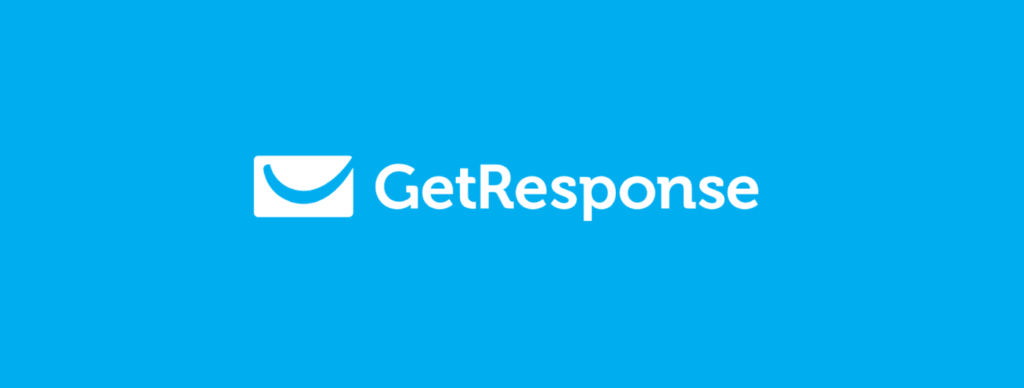
In the digital era, captivating your audience is paramount, and GetResponse‘s Landing Pages stands as a powerful ally. This tool empowers users to create visually appealing, high-converting landing pages without needing coding expertise. It offers a rich library of customizable templates catering to various business needs and marketing campaigns. Intuitive drag-and-drop functionality ensures ease of use, while advanced features like A/B testing optimize effectiveness.
Integration with other GetResponse tools, such as email marketing and automation, enhances the overall marketing strategy, ensuring a seamless user experience. Whether promoting a product, event, or service, GetResponse’s landing pages are designed to boost engagement and conversions, making them an essential tool for any digital marketer. Try GetResponse for free!
